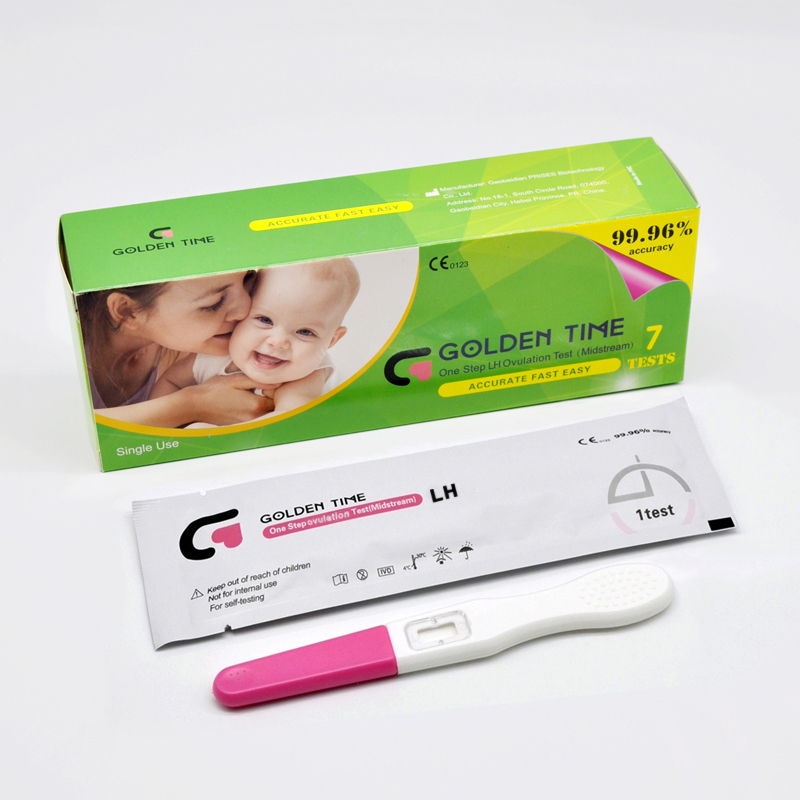Nov . 22, 2024 23:40 Back to list
pregnancy test sticks factory
The Manufacturing Process of Pregnancy Test Sticks
Pregnancy test sticks have revolutionized the way individuals confirm pregnancies, offering convenience, privacy, and reliability. Understanding the manufacturing process of these sticks provides insight into both the technology behind them and the quality control measures that ensure they work effectively.
Overview of Pregnancy Test Sticks
Pregnancy test sticks, often referred to as home pregnancy tests, detect the presence of human chorionic gonadotropin (hCG) in urine. hCG is a hormone produced shortly after a fertilized egg implants in the uterus. The tests typically come in a plastic casing with an absorbent tip designed to be dipped into a urine sample. The results are usually displayed as lines or a digital readout, depending on the test's design.
Raw Materials
The manufacturing of pregnancy test sticks begins with the selection of high-quality raw materials. The primary components include the plastic casing, absorbent materials, and the reactive elements that detect hCG.
1. Plastic Casing This forms the outer structure of the test stick. It is essential that the plastic is non-reactive and can withstand exposure to moisture. Typically, high-quality polypropylene is used for its durability and cost-effectiveness.
2. Absorbent Tip This component is usually made from a blend of cellulose fibers or other absorbent materials designed to quickly absorb urine and deliver it to the reactive area.
3. Reactive Agents The testing area incorporates specific antibodies that react with hCG. These antibodies are usually attached to colored particles, leading to a visual change when hCG is detected. The most common method involves using monoclonal antibodies for their specificity and sensitivity.
The Manufacturing Process
pregnancy test sticks factory

The production of pregnancy test sticks involves several key stages, each carefully controlled to maintain quality and effectiveness.
1. Preparation of Components The raw materials are prepared and stored under controlled conditions. The absorbent tip may be treated to enhance its absorbency, and the reactive agents are prepared under sterile conditions to avoid contamination.
2. Assembly The assembly line begins with molding the plastic casings. Once the casings are produced, the absorbent tips are attached to one end. This process is often automated to ensure speed and consistency.
3. Application of Reactive Agents The key step in the manufacturing process is applying the reactive agents to the designated area of the test stick. This is typically done using a precision dispensing machine that ensures the correct amount is applied uniformly.
4. Drying and Quality Control After the reactive agents are applied, the test sticks need to be dried thoroughly to ensure accuracy. This step is critical; if moisture remains, it can affect the test's performance. Quality control teams perform rigorous testing to ensure each batch meets the necessary sensitivity and specificity standards. Tests are often conducted using known concentrations of hCG to validate the accuracy of the test sticks.
5. Packaging Once the tests pass quality control, they are packaged in protective materials to preserve their efficacy. This includes sealing the test sticks in individual foil pouches to protect them from moisture and environmental factors.
Regulatory Standards
Manufacturers of pregnancy test sticks must adhere to strict regulatory standards. In many regions, these tests must receive approval from health authorities such as the FDA (Food and Drug Administration) in the United States or CE marking in Europe. These regulations ensure that pregnancy tests are safe, effective, and reliable for consumer use.
Conclusion
The manufacturing process of pregnancy test sticks is a complex interplay of advanced technology, quality control, and adherence to strict regulatory standards. The result is a convenient, reliable product that empowers individuals to make informed decisions about their health. As technology evolves, we can expect further innovations in the design and functionality of these essential home testing devices, continuing to make family planning more accessible and efficient for everyone.
-
Dengue NS1 Rapid Diagnostic Test Kit
NewsMar.07,2025
-
Dengue NS1 Rapid Diagnostic Test Kit
NewsMar.07,2025
-
Dengue NS1 Rapid Diagnostic Test Kit
NewsMar.07,2025
-
Transferrin Rapid Test Cassette Tumor Marker TF Card
NewsMar.07,2025
-
Malaria Pf Pan Rapid Diagnostic Test Kit
NewsMar.07,2025
-
malaria pf / pan ag rapid test
NewsMar.07,2025

